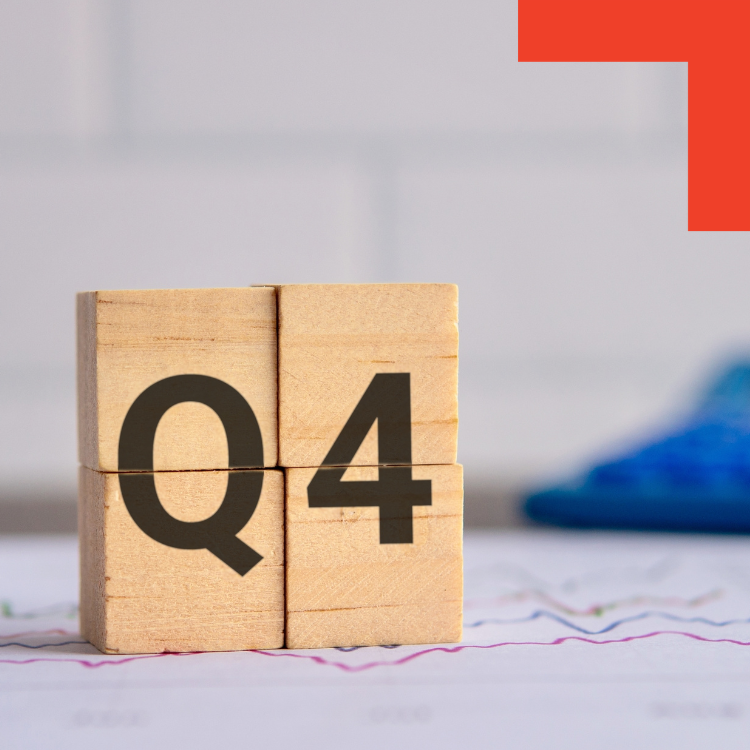8 Ways to Align Marketing and Sales Through Data
Aligning marketing and sales is crucial for driving growth and improving efficiency within any organization.

In this episode of Freight Marketing Gurus, Jennie Malafarina sits down with Jess Kodrich, the Director of Marketing at OnStation, a startup specializing in digital stationing for highway projects.
Jess brings her unique perspective from leading marketing in a startup environment, where she also dabbles in sales initiatives and CRM management with HubSpot. Her experience with aligning marketing and sales, leveraging data tools, and finding efficiencies through automation offers a treasure trove of insights.
8 Tips to Align Marketing and Sales
1. Monthly Alignment Meetings Drive Consistency
Regular communication is essential for marketing and sales alignment. Holding structured monthly meetings allows both teams to review the impact of their efforts, track progress toward shared goals, and address any friction points. By focusing on goals that overlap, the teams can work together more efficiently, ensuring that marketing provides qualified leads and sales follows up with relevant actions. A consistent cadence of meetings builds a rhythm that enables both departments to make data-driven decisions and adjust quickly when necessary.
2. Leveraging Data Tools for Better Prospecting
Tools like ZoomInfo and LinkedIn are powerful resources for enriching lead data and enhancing sales prospecting. ZoomInfo, in particular, allows businesses to gather detailed information about prospects, such as industry data, company size, and buying behavior, giving the sales team a fuller picture before they make contact. By integrating these tools with platforms like HubSpot, companies can automate much of the data collection process, leading to better prospect targeting and higher conversion rates.
3. Custom Dashboards to Track Key Metrics
Using HubSpot’s custom dashboards, companies can create reports that track how leads move through the sales funnel. Metrics such as response times, conversion rates, and deal progression can be analyzed in real-time, helping teams identify bottlenecks or points where leads drop off. These dashboards also allow for quick action, enabling marketing teams to adjust messaging or sales teams to follow up faster. The ability to pinpoint specific problem areas allows both departments to stay agile and focused on closing deals.
4. Combining Automation with Personal Engagement
While automation is critical in streamlining workflows, there are times when personal touchpoints are more effective. For example, when a prospect’s engagement starts to decline, introducing a personal outreach—such as an in-person meeting—can make a significant difference in moving the deal forward. Finding the balance between automated systems and human interaction is key to creating a buyer’s journey that feels both efficient and personalized.
5. Simplifying Processes for Sales Teams
One of the most important aspects of aligning sales and marketing is ensuring that tools and processes are easy for sales teams to use. By minimizing the number of clicks or steps needed to perform tasks—such as sending emails or checking lead data—sales reps can spend more time selling and less time managing administrative details. Simplified dashboards and clean workflows enable sales teams to focus on high-value activities that drive revenue.
6. Data-Driven Adjustments Improve Success Rates
Continuous improvement is critical when managing a pipeline. By using data from tools like HubSpot and ZoomInfo, teams can identify where leads are getting stuck and make adjustments to their processes. Whether through more targeted retargeting efforts, refining messaging, or adjusting the timing of follow-ups, marketing and sales teams can continuously refine their strategies based on real-time insights. This flexibility ensures that both teams can pivot quickly and effectively when a tactic isn’t working.
7. Clear and Focused Notifications Reduce Noise
A common problem with CRM platforms is notification overload. Sales teams often receive too many irrelevant updates, making it easy to miss important information. By tailoring notifications to focus only on what’s most critical, businesses can reduce noise and ensure that sales teams are alerted to the activities that matter most—like when a lead engages with content or moves to a new stage in the sales funnel. This increases productivity and ensures that no key action is overlooked.
8. Maximizing the Use of Campaign Tools
Using the campaign management tools within HubSpot can significantly improve marketing efficiency. By tying budgets, events, and audiences together in one place, marketing teams can quickly see the ROI of specific campaigns and adjust spending accordingly. This data allows companies to focus their efforts on the campaigns that deliver the highest value, while cutting back on those that underperform. It also provides transparency into how various initiatives contribute to overall business goals.
Get Results with Strategic Planning
For companies looking to maximize their marketing and sales efforts, a strong alignment between the two departments is essential. By leveraging data tools, holding regular meetings, and ensuring simplicity in processes, businesses can streamline their workflows and drive better results. Automation combined with human touchpoints, data-driven adjustments, and optimized communication will create a more efficient and effective pipeline that benefits both marketing and sales.
For more insights from Jess, watch the full episode.
Do you have a disconnect between marketing, sales, and revenue? Reach out to Virago Marketing to align your internal strategies and get real results.
Let's Talk.
Marketing is essential to growing your business and getting your message out to your target audience. We can help you do that with a strategic, full-funnel approach that drives revenue. Let’s get started.


